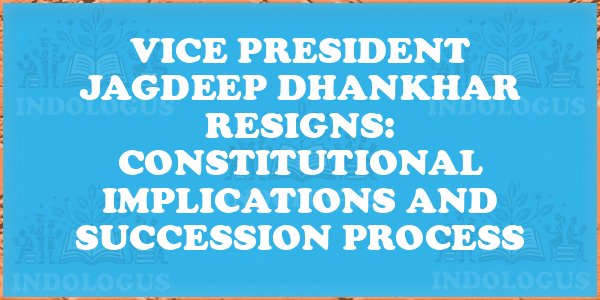The unexpected resignation of Vice President Jagdeep Dhankhar on July 21, 2025, just three years into his tenure, has activated several constitutional provisions related to succession, Rajya Sabha functioning, and electoral procedures. Let’s delve into the details of this significant development.
Constitutional Position of the Vice President
The Vice President of India holds the second-highest constitutional office in the country. As per Article 63 to 71 of the Constitution, the Vice President serves a five-year term and acts as the ex-officio Chairman of the Rajya Sabha.
Resignation and Article 67(a)
- Jagdeep Dhankhar resigned under Article 67(a) of the Constitution.
- A successor must be elected within 60 days as mandated by the Constitution.
Who Chairs the Rajya Sabha Now?
During the vacancy, the Deputy Chairman of the Rajya Sabha, Harivansh Narayan Singh, is assuming the responsibilities of the Chairman.
Election Process of the Vice President
- The election process is governed by Articles 63 to 71 of the Constitution and the Vice-President (Election) Rules, 1974.
- The election involves a proportional representation system by means of a single transferable vote.
- The Election Commission of India will announce the election schedule, with the voting to be conducted before September 19, 2025.
Eligibility Criteria for Vice President
- A candidate must be a citizen of India, at least 35 years old, qualified to be elected to the Rajya Sabha, and not hold any office of profit under the central or state government.
Political and Administrative Significance
The resignation of Vice President Jagdeep Dhankhar holds political and parliamentary implications, coinciding with organizational changes within the BJP.
Key Takeaways for Competitive Exams
- Understanding the constitutional provisions related to the Vice President’s resignation and succession process is crucial for competitive exams.
- Familiarity with the electoral procedures and eligibility criteria for high constitutional offices can enhance your knowledge base.
- Connecting political events to constitutional principles can provide a comprehensive understanding of India’s governance structure.




